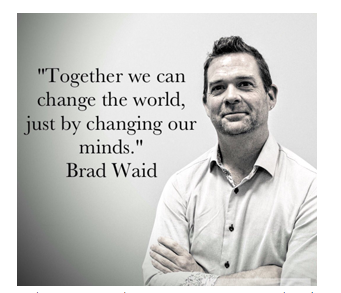Wow what an experience!
I was overwhelmed with the number of people who were there. I didn’t quite know what exactly I was going to. There were over 1500 educators, 250 presenters and over 300 breakouts to choose from It made it real seeing my name listed in the book .
 I was lucky to be presenting on the first day of the conference. Thank goodness for that too! The morning of the presentation I was so nervous! I couldn’t eat lunch as I was going to be presenting straight after. When we arrived at the room that our presentation was going to be in…It felt so real seeing the sign with our names on it.
I was lucky to be presenting on the first day of the conference. Thank goodness for that too! The morning of the presentation I was so nervous! I couldn’t eat lunch as I was going to be presenting straight after. When we arrived at the room that our presentation was going to be in…It felt so real seeing the sign with our names on it.We had a good number of people choose our breakout session and we delivered our presentation over the next hour and half. Boy time flies! It was crazy that I was so nervous to start off with as once I began speaking it was so hard to stop...I guess when you know what you're saying and when you are really passionate it is very easy to keep talking. The people who attended were intrigued and really interested in what we were sharing. It was good to get great feedback afterwards.
Thanks to Kelsey Morgan for the support at the session..she was great when the IT started playing up half way through. It was such a good feeling being able to share what I have been learning and I am really proud of myself for stepping up and going outside of my comfort zone.
Presenting on the first day allowed myself to relax for the rest of the conference and really enjoy myself and be able to attend other sessions and give all my attention to them.
This is the slides that we used for our presentations. We used them to inform people what our research project is on, the background of project, the screening tool, initial data summary and the teacher inquiries and where we are heading next.
 The main message from all of the speakers was about relationships and how important relationships are and how they are the key. This related and really stuck with me as one of the main things learnt from our inquiry so far is that “It’s not okay to not have a relationship”
The main message from all of the speakers was about relationships and how important relationships are and how they are the key. This related and really stuck with me as one of the main things learnt from our inquiry so far is that “It’s not okay to not have a relationship”
I attended a breakout session run by Sally Peters on Compassion, care and curiosity - Powerful drivers of teacher research. I was really engaged through her entire presentation, as I am currently undertaking teacher research and I could directly relate to everything she said. Sally Peters is one of the key gurus in New Zealand for transitions to school from ECE also. Her work and research is well worth the read!
Here are the links to the main key note speakers: Each speaker spoke for an hour.

I came back home buzzing after attending this conference...
We had key note speakers that everybody could attend and then we were able to choose other sessions that were of interest to us. There is so much I could share!
 The main message from all of the speakers was about relationships and how important relationships are and how they are the key. This related and really stuck with me as one of the main things learnt from our inquiry so far is that “It’s not okay to not have a relationship”
The main message from all of the speakers was about relationships and how important relationships are and how they are the key. This related and really stuck with me as one of the main things learnt from our inquiry so far is that “It’s not okay to not have a relationship”I attended a breakout session run by Sally Peters on Compassion, care and curiosity - Powerful drivers of teacher research. I was really engaged through her entire presentation, as I am currently undertaking teacher research and I could directly relate to everything she said. Sally Peters is one of the key gurus in New Zealand for transitions to school from ECE also. Her work and research is well worth the read!
Eric Mazur was the first key note speaker
“Innovating education to educate innovators”
Brad Waid was the second key note speaker
“Engaging the globally connected student of today: A look at emerging technology, gaming and digital citizenship”
His presentation had me hooked for the entire hour..so much to think about.
He had so many quotes throughout this one in the photo has stood out.
The last key note speaker on the final morning was Dr Ann Milne. Her presentation got the crowd really thinking and she had a standing ovation at the end.
“Colouring in the white spaces: Cultural identity and community in whitestream schools”
I came back home buzzing after attending this conference...
I thank the CaWS project for making this happen and also Andrew and the Gilberthorpe School Board for allowing me this amazing opportunity to attend this national conference. I hope to be able to attend this again in 2018 and present our findings.

































